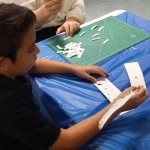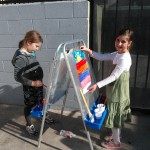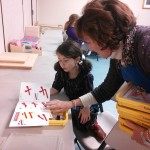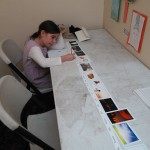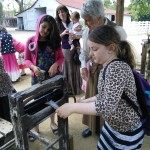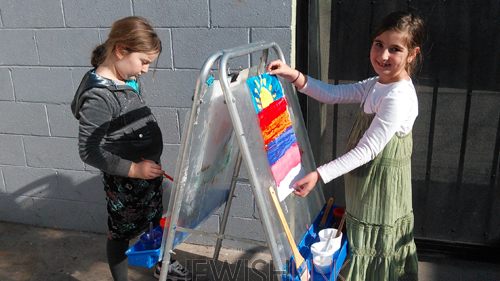
I push open the door to my seven-year-old daughter’s classroom at the Darko Learning Academy in Los Angeles. There, I see her and a friend working together on a giant woodcut of a world map. They’re putting the countries’ corresponding flags in their correct places, deep into a discussion over world geography.
As I look around, I spotanother pair of children tinkering with a series of beads, through which they’re learning the decimal system. A third set is going through a stack of Hebrew cards and pictures, piecing together a pasuk (sentence) from sefer Bereishis (the book of Genesis).
Their morah (teacher) strolls around the room, observing and stopping to talk with the children about what they’re working on at their “stations,” a solid block of time where the students navigate their way through different learning tools and manipulatives at their own pace. She gently encourages them to reach their own conclusions about their projects.
As a teacher, I’ve seen a wide spectrum of schools and their students.I’ve taught in Brooklyn public schools where there were not enough desks, books, or security officers to go around. I’ve taught in quiet, suburban Chabad Hebrew School classrooms. I’ve taught belligerent teenagers and cheerful preschoolers. But I have seen nothing as amazing as what I see daily at Darko: an excitement amongst the kids about their education and an unending passion for learning.
Darko, which is in the Pico Robertson neighborhood of Los Angeles,is a Jewish Montessori school, which in and of itself doesn’t make it unique. Darkostands out because it’s one of the only Jewish Montessori institutions in the world to educate elementary and secondary school children. It also has a full limudei kodesh (Torah subjects)curriculum alongside the secular curriculum seen in any Montessori school.
In a Montessori environment, learning is a sensorial, full-body experience. There are no tests or grades. Learning and knowledge have golden, intrinsic value. Children are encouraged to learn for the sake of learning instead of for good grades or to pass a test.
There is structure, but there is also intellectual freedom. Within the parameters of the day’s available stations, the students can choose what they want to learn, when they are ready to learn it. There is no “falling behind,” “gifted,” or “slow learner.” These limited labels do not enter the Darko vernacular.Rather, each child learns at his or her own pace and internalizes a concept before he or she moves on.
A study appearing in the Sept. 29, 2006 issue of Science Journal that compared Montessori to traditional education stated that there were “significant social and academic advantages” for Montessori-educated children over children educated in a traditional school environment. Montessori-educated students learn to work closely with different ages, as opposed to a traditional, same-age peer group. I once found my daughter, the youngest in her class and still working on her reading and writing skills, writing a huge chalk message on the pavement in the courtyard. “No,” said her nine-year-old classmate, without a trace of a sneer or amusement. “D goes the other way, like this, see?”
As for learning being a full-body experience, I’ve seen the kids so absorbed in what they are doing that they don’t look up when someone comes in the room. Learning, here, is relevant and spans all subjects. The kids might be studying about the makkos (plagues)in the parasha (weekly Torah portion),visiting the frogs, snakes and bugs in the zoo during their weekly field trip, reading about Laura Ingalls’ locust infestation on her 1870’s Midwestern homestead, and processing all of it through prose or poetry on the class blog, all at the same time.
Learning at Darko isn’t always behind a desk, either. I’ve witnessed some of the girls’ science classes act out the differences between ionic and covalent bonds by pretending they were different atoms and molecules. In another class, they learned about the states of matter (solid, liquid and gas) by making their own chocolate candies from start to finish.
When people ask, “Why do you send your kids to Darko?” I’m proud to tell them about the creativity, the motivated, self-directed learning, and the students’ obvious pride in themselves and in their accomplishments. I’m thrilled to see how my daughter is blossoming academically, socially and in her yiras shamayim (awe and fear of G-d).
Darko is a revolutionary institution not only in the Jewish world, but also in the academic community at large. Thanks to this school, children are learning how to think for themselves, learn what they want and decide how they learn it, and create their own microcosms of educational settings. At Darko, they’re learning the true skills they need to succeed in life, beyond the walls of the classroom. So when my daughter and her play date beg to make a scientific experiment using everything in my kitchen, or she asks on her own to go visit an elder care center, or I catch her reading a bedtime story to her younger siblings, I know I’m doing something right by sending her to Darko.
By Miriam Shapiro

